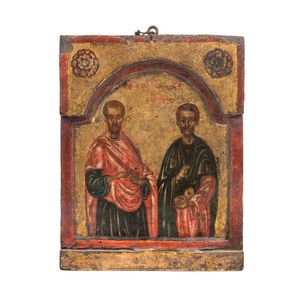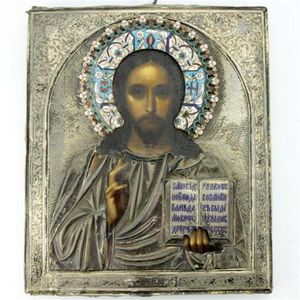Beethoven Life Mask on Wooden Base
You must be a subscriber, and be logged in to view price and dealer details.
Subscribe Now to view actual auction price for this item
When you subscribe, you have the option of setting the currency in which to display prices to $Au, $US, $NZ or Stg.
- Attributed - A cataloguing term where the item in the opinion of the cataloguers, is a of the period of the artist, craftsman or designer, and which probably in whole or part is the work of that person.
- Laurel Leaf - The use of the laurel leaf as a decorative element can be traced back to ancient Greece and Rome, where it was closely associated with victory and honour. In these cultures, the laurel was a sacred tree that was dedicated to the god Apollo and was believed to have protective and healing properties.
In ancient Greece, the laurel wreath was awarded to victors in athletic competitions, such as the Olympic Games, as a symbol of their achievement. The wreath was also associated with academic achievement, and was often worn by scholars and poets. The Greeks also used the laurel leaf as a symbol of victory in war, and it was often depicted in artwork alongside images of triumphant warriors and heroes.
The Romans continued this tradition, and the laurel wreath became a symbol of the highest military honor, the triumph, awarded to victorious generals. The wreath was also used to crown emperors and other important officials, and was often depicted in Roman art and architecture as a symbol of power and authority.
The laurel leaf is still used as a symbol of achievement, success, and excellence, and is frequently used in logos, emblems, and other branding materials. Its association with victory and honour has made it a popular choice for awards, medals, and other forms of recognition. - Incised - A record of a name, date or inscription, or a decoration scratched into a surface, usually of a glass or ceramic item with a blunt instrument to make a coarse indentation. Compare with engraving where the surface is cut with a sharp instrument such as a metal needle or rotating tool to achieve a fine indentation.
This item has been included into following indexes:
Visually similar items

A Russian icon, hand painted gesso on timber, 19th century. 28 x 22 cm.

A collection of five Russian icons including Saint Nicholas, the Mother of God and Saint Nicholas above a row of Saints, Saint Cosmos and Saint Damian, The Dendrite Hermit, Saint Triphon Kolsky, the Miracle Worker and another, the largest 30 cm high, 26 cm

A late 18th century miniature portrait of George III (King of Great Britain), coloured engraving backed onto glass with gold foil, original wood frame with suspension ring. 15 cm x 12 cm.

Russian silver 84 standard & enamel icon Christ Pantokrator modelled with mild colours, the raised border of the silver oklad tooled with stylized forms, with an enamel halo. Condition, good to fair, some wear consistant with age. Dimensions, 31.5 x 26.5 c
